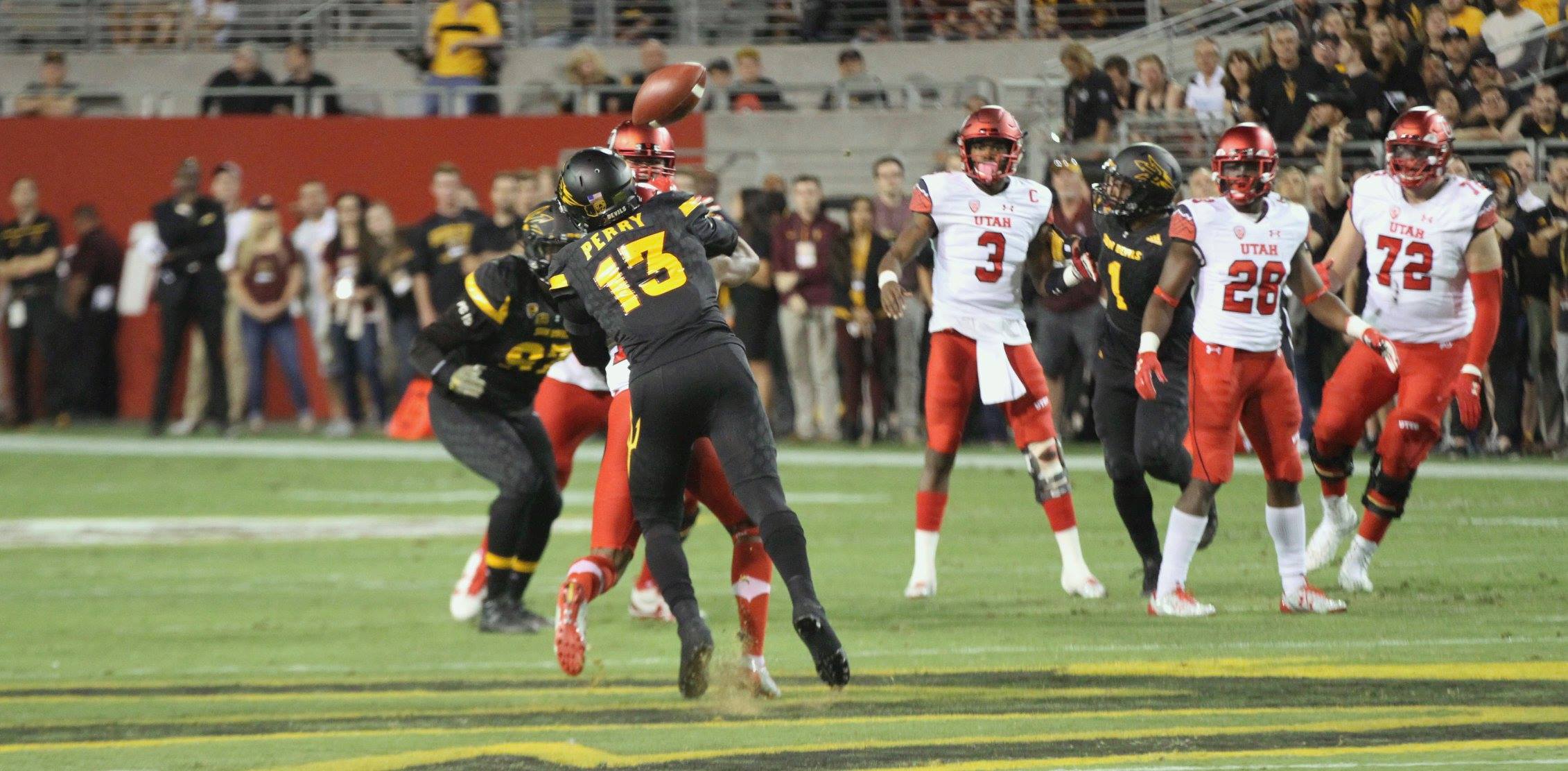
(Photo: Scotty Bara/WCSN)
The story revolving around this year’s Arizona State team all season long has been the faltering defense, and for good reason. It has been a plethora of incidents and mishaps that have forced nearly everything to go wrong for the unit.
Some of the struggles can be attributed to injuries. Defensive leaders such as Christian Sam and Salamo Fiso have missed more of the season than they have played. Kareem Orr and Armand Perry, the de facto leaders of the secondary, have not been able to keep the group afloat because of their health problems.
It’s tough to say a drastic improvement would’ve happened had its stalwarts remained healthy, but it has not helped.
The overall numbers are grotesque, especially when it comes to the passing defense. ASU has allowed 387 passing yards per game, which is the worst in the country by a large margin. The next highest, Pittsburgh, has allowed only 343.
To put it into a little bit more perspective, there are 29 teams in the FBS that have three or fewer wins, including several mid-major teams, and yet all have been significantly better against the pass than ASU.
A 5-5 record is not shiny, but offense and special teams, rather than defense, have been why ASU has gotten there. With even a middle of the road offense, the record could be a lot uglier than it is now.
The Sun Devils have fared slightly better defending the run, but the stats are skewed at the same time. They are 25th in the NCAA in rushing yards allowed, though they have faced three Air Raid teams who don’t pick up many yards on the ground. When facing good running backs, ASU has a tendency to struggle.
Joe Williams of Utah just recently lit them up for 190 yards on only 15 carries.
After a difficult 2015 season, the first sign of a struggle that we saw with the Sun Devils defense was against Texas Tech. Even though ASU came away with the win, it allowed 540 passing yards, which has become more of the norm than an aberration.
The scheme that the Sun Devils play isn’t simple. Essentially, it’s an ever changing formation that can range anywhere from a 4-3 to a 4-2-5, and largely depends on where SPUR Laiu Moeakiola is playing.
It’s interesting to consider whether the Sun Devils are doing too much defensively. Teams atop the Pac-12 like Colorado and Utah play a simpler 4-3 scheme that has allowed them to have more success because their personnel meshes perfectly with it.
Todd Graham mentioned after his team’s Thursday’s loss to the Utes that the Sun Devils were running a Cover 4 for most of the game, a defense designed to prevent big plays. Yet they were still the victim of three plays that went for over 40 yards and rarely executed it to perfection.
While it is not an occurrence every game, the Sun Devils have utilized the Cover 4 against passing offenses that are better than Utah, with little success to boot.
Because of the persistent struggles, it’s natural to divvy out blame. While Marcus Ball has been a bright spot in the secondary, and Orr and Perry have shown flashes, the back end has not been able to put it completely together this year.
A lot of it has been due to the inability to find a cornerback opposite Orr. De’Chavon Hayes, like most of the defense, has not tackled well on many occasions, while Maurice Chandler has had frequent injury problems.
Some of the problems also stem back to Fiso’s injury. Even though he is not a part of the secondary, Fiso is still the primary communicator for the entire defense, and without him the group has been lost at times.
However, many Sun Devil fans have wondered if Keith Patterson is going to be the fall guy from this season long defensive abomination.
Graham deflected questions on Thursday about Patterson, who worked with him at Tulsa and Pittsburgh and has been the defensive coordinator at ASU since 2014.
“I’m responsible for 100 percent of what goes on at our program,” Graham said. “We evaluate our program at the end of the season.”
Whatever route is chosen at the end of the season, it’s clear that taking a significant step forward will be emphasized for a defense that has been the program’s liability for the past two years.


